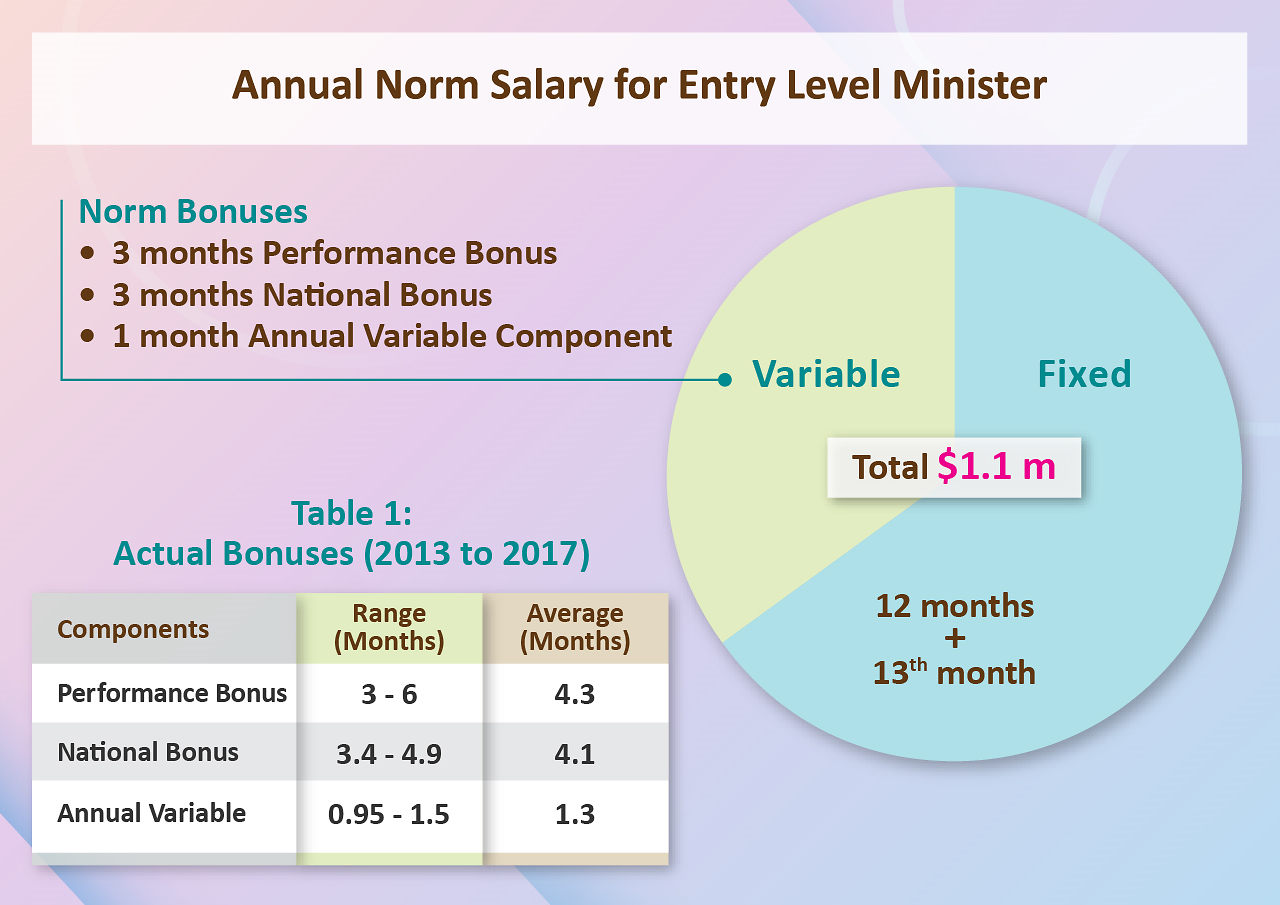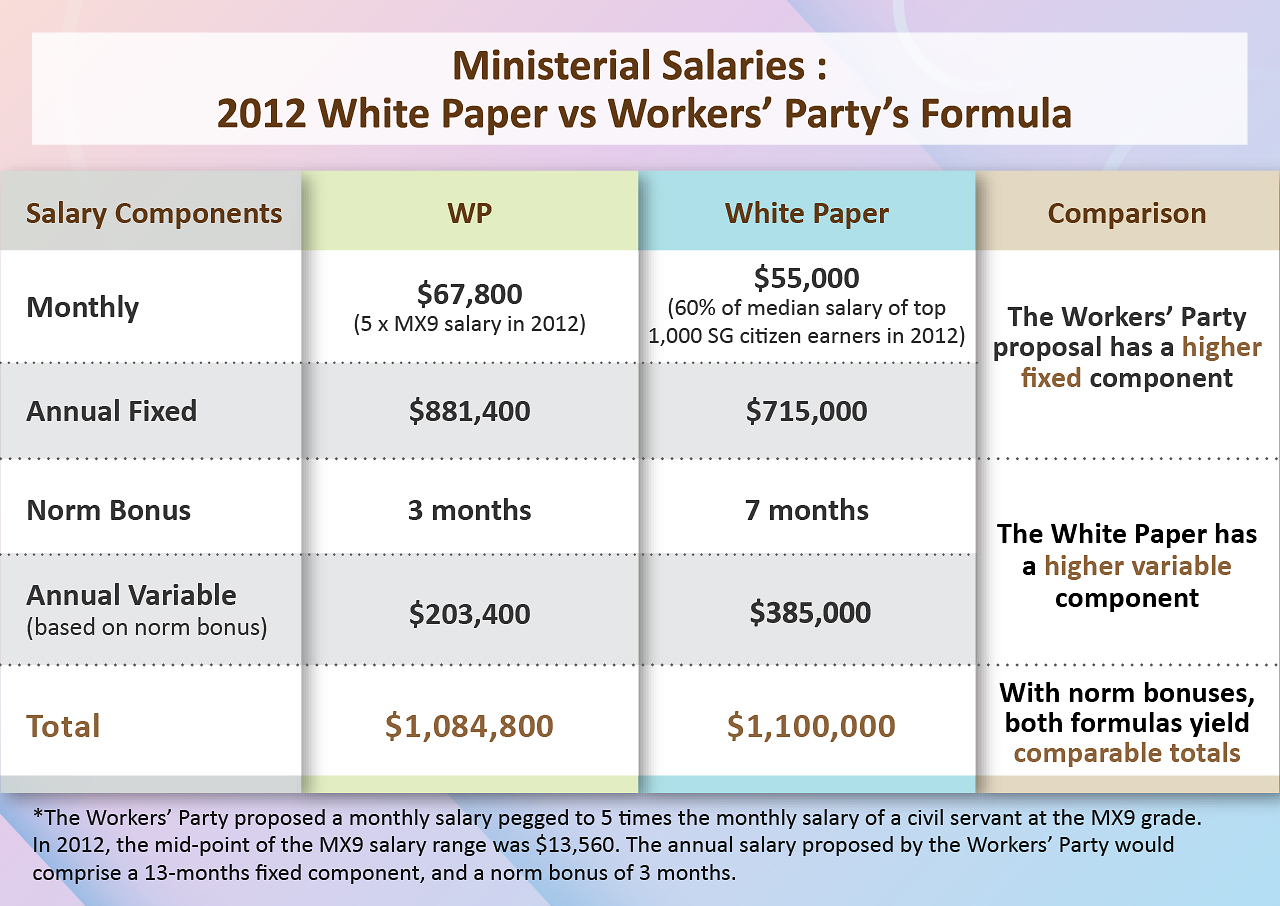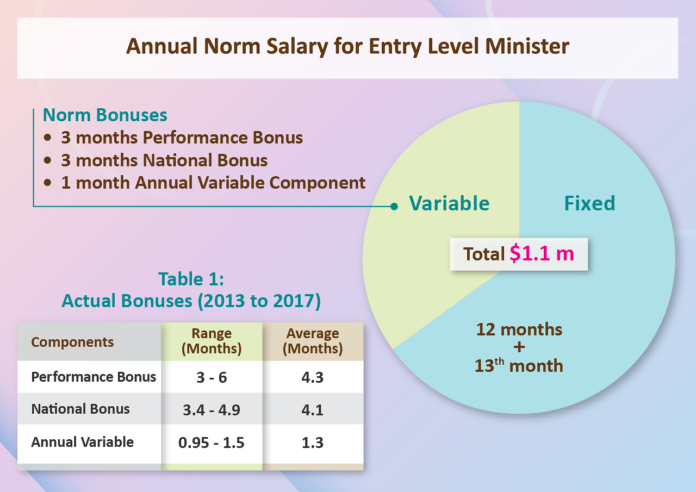SINGAPORE: The salary structure for Singapore’s ministers is “totally transparent” and “there are no hidden components or perks”, said Deputy Prime Minister Teo Chee Hean in Parliament on Monday (Oct 1).
In mid-September, the Government moved to debunk what it called “falsehoods” about ministerial salaries – such as, among others, Prime Minister Lee Hsien Loong being paid a total of S$4.5 million.
A week earlier, Mr Lee had also revealed in a written parliamentary reply that the average performance bonus of Singapore’s political office-holders was 4.1 months in 2017, with the range of three to six months’ performance bonus remaining constant from over the last five years.
READ: Average performance bonus of political office-holders dipped slightly in 2017
The issue was first cast into the spotlight in August, when Emeritus Senior Minister Goh Chok Tong was quoted saying that Singapore’s ministers are “not paid enough”, though he later clarified that salaries are not a “starting point in looking for ministers”.
In his response on Monday to a question tabled by Member of Parliament Alex Yam, Mr Teo reminded the House of the 2012 White Paper on government salaries, which recommended a norm level of S$1.1 million as the total annual salary for an entry-level (MR4) minister – based on a 40 per cent discount to the market reference, to reflect the ethos of public service.
“All the bonus components form part of, and are not in addition to, the S$1.1 million salary norm,” he stressed.
Mr Yam had asked for a list of all the components of the salaries of the ministers and the Prime Minister, the amounts paid for each component, and whether the components are fully included in – and are not over and above – the ministerial salary benchmark established in the 2012 White Paper.
READ: ‘Salaries is not our starting point in looking for ministers’ – Goh Chok Tong responds to criticism of comments on pay
Mr Teo reiterated that the Prime Minister’s salary – twice that of an MR4 minister, at S$2.2 million – did not include a performance bonus.
“But to keep to the principle of making a significant part of the PM’s total pay subject to performance – that is, 35 per cent, the PM’s variable pay has twice the national bonus compared to other ministers, to reflect national outcomes, in place of the individual performance bonus,” he added, noting that there are no other components or perks otherwise.
ON THE WORKERS’ PARTY FORMULA
Moving on the variable pay components received by political office-holders, DPM Teo emphasised that these were in accordance with the White Paper framework, and not on top of it.

Annual norm salary for entry-level ministers. (Graphic: Public Service Division)
He said bonuses depended on the actual performance of individuals as well as Singapore’s national outcomes each year, namely the real median income growth rate; the real growth rate of the lowest 20th percentile income of Singaporeans; the unemployment rate; and the real GDP growth rate.
While the annual variable component is the same amount received by all civil servants, the performance bonus is determined by the Prime Minister in consultation with senior Cabinet ministers.
“But I should emphasise that each office-holder receives only one salary regardless of whether he holds one or multiple portfolios,” said Mr Teo.
READ: No salary for Emeritus Senior Minister post, says Goh Chok Tong
Later, in response to a supplementary question by Mr Yam, Mr Teo also confirmed that ministerial pensions had been discontinued in 2012, with “no hidden benefits”.
Mr Teo pointed out that the opposition Workers’ Party (WP) had, in 2012, endorsed the White Paper’s principles of salary determination – and added that the formula proposed by WP then would have resulted in the same total annual salary for entry-level ministers.

Comparing ministerial salaries on the 2012 White Paper and The Workers’ Party’s formula. (Table: Public Service Division)
“But the Workers’ Party formula would have had a higher fixed component (of 81 per cent) compared to the White Paper’s proposal, and a smaller variable component (of 19 per cent),” said DPM Teo.
“This means the WP would have paid out a higher portion of the salary – about S$880,000 out of S$1.1 million – regardless of individual performance or national outcomes, and even if the outcomes were not achieved.
“This would have made the link between salary and performance weaker.”
WP chief Pritam Singh later reaffirmed his party’s position was the same as in 2012 – and agreed that the total amounts as presented in the table were accurate and correct.
The WP and government proposals are “very close” to each other in principle and quantum, said Mr Teo. “Indeed if, if there were a WP government in power today, by their own formula, a WP minister would be paid essentially the same as what a minister today is paid.”





